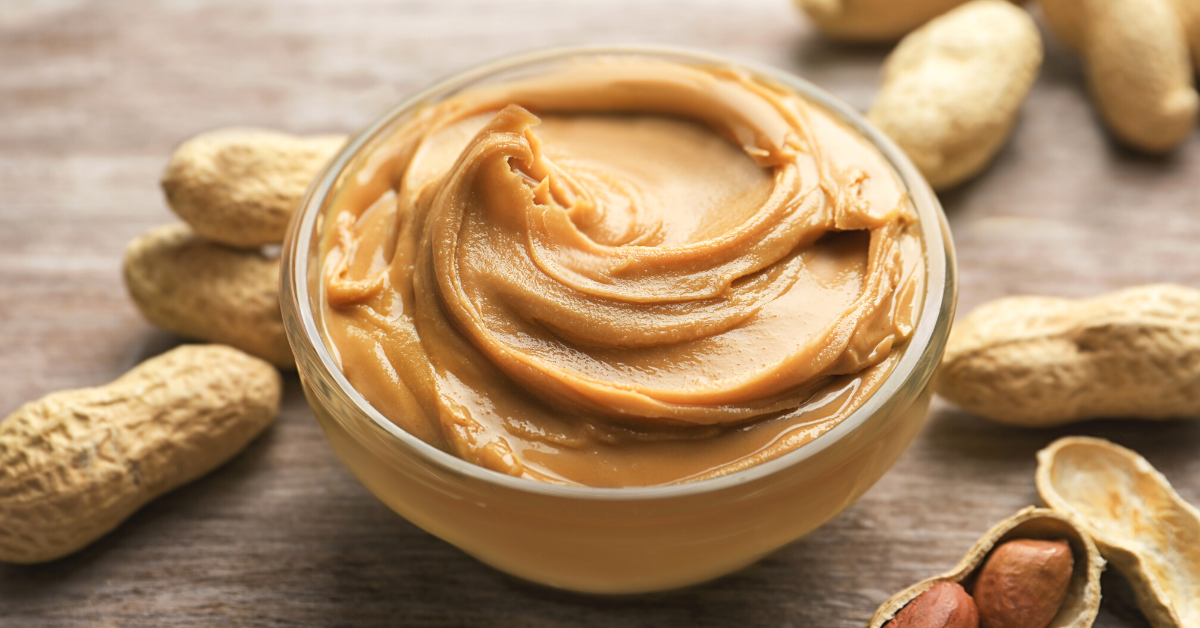
Diabetes Problem Foods: People with diabetes often hear opinions about what foods are okay to eat or not. But what’s the truth? Here is some perspective about peanut butter from Timika Chambers, CDCES.
Diabetes Problem Foods, Pt. 6
Many people, including People With Diabetes (PWD), grew up eating peanut butter and jelly sandwiches, an all-time favorite, often combined with chicken noodle soup, chili, or occasionally eaten by itself. Today, some PWD still enjoy peanut butter and look for creative ways to enjoy it creamy or crunchy in or with their favorite foods. The American Heart Association lists peanuts, the main ingredient in peanut butter, as one of the healthiest nuts to consume. Unfortunately, peanuts belong to the list of the top eight food allergies in the world. Given peanut butter’s nutritional value and if you are not allergic to peanuts, PWD may benefit from adding this food to their meal plan, as discussed below.
History of Peanut Butter
According to research, the Aztec and Mayan civilizations discovered peanuts; the discovery of peanut butter was the result of crushing the peanuts to make a paste. In 1897, Dr. John Kellogg, an American physician, the developer of the famous cornflake cereal, and a vegetarian, patented the first process of making peanut butter.
In 1904 peanut butter was first introduced at the St. Louis World’s Fair. It gained popularity during World Wars I and II as an important ration for troops. Considering how food products tend to change over the years, the peanut butter you will find on grocery store shelves today is surprisingly similar to what was made a century ago. That's because of regulations that were placed on the industry. After a 12 year legal battle, the FDA won a case concluding that, In order to be legally labeled "peanut butter," the product has to be made of 90% peanuts and cannot contain artificial colors, preservatives or artificial sweeteners. Otherwise, the product could only be labeled "peanut spread."
Nutritional Facts
The serving size of peanut butter is two tablespoons. One serving of peanut butter supplies 16 grams of fat
- monounsaturated fat: 8g (healthy fat)
- polyunsaturated: 4.4g (healthy fat)
- saturated fat: 3.3g
The American Heart Association recommends a daily fat intake of 5-6% of your total calories, 13 grams per day if you consume 2000 calories a day. In this example, and if you eat three meals a day, you want to have no more than 4 grams of saturated fat if you limit your calories to 2,000 a day. Consume less if you include saturated fat in your snacks. Peanut butter indirectly helps with heart health because it is a no cholesterol food and a low-sodium (5mg) food.
Whole peanuts belong to the list of low glycemic foods. When it comes to peanut butter, PWD need to read and compare ingredients. The extra ingredients in peanut butter, such as sugar, may change the effect of peanut butter on their blood sugars. Peanut butter contains:
- Potassium (208mg), a necessary vitamin for muscle contraction, including heart contraction,
- Dietary fiber (2g), a nutrient under-consumed in American meal plans, which helps to slow down the breakdown of glucose.
Uncontrolled blood sugars can negatively impact the immune system and how our body creates and uses glucose for energy.
Other nutritional benefits include:
- Protein: cells need protein to repair and grow. Peanut butter supplies approximately 7 grams of protein. The recommended daily intake (RDI) of protein for women is 46g for women and 56g for men.
- Magnesium: a crucial mineral needed by the body to facilitate bodily reactions such as protein synthesis (the making of protein in the body), muscle, and nerve cell function, including keeping the natural rhythm of our heart. Peanut butter provides 57mg toward RDI for adults, depending on age and gender, (310-420 mg).
- Zinc: a mineral that aids in healing, peanut butter provides 0.85mg toward the RDI of 11mg for men and 10.6mg for women.
- Niacin: helps with maintaining normal blood pressure by keeping our blood vessels open. Niacin also plays a role in digestion and nerve function, all of which support the bodies of PWD. Peanut butter gives 4.3mg toward the 14-16 mg RDI.
- Vitamin B6: helps your body use glucose better. Peanut butter provides 0.17 grams (about 14% RDI) per serving.
Helpful Tips
Try other forms of nut butter by using almonds and walnuts. After making a small batch of almond cookies for the first time, they lasted for less than one hour in our household. You can make nut butter cookies using your favorite nut butter, one egg, and your favorite sweetener.
A good alternative to peanut butter on toast is sliced avocados. Avocados contain monounsaturated fats and several heart-healthy minerals, nutrients, such as fiber, and vitamins.
Increase the health benefits of peanut butter by choosing one with fewer and healthier ingredients. Look at the type of sugar, amount of salt, and additional fillers in the product. The closer we are to consuming natural foods, the better.
You can make peanut butter with less than three ingredients. I use 2 cups of peanuts, pinch to ¼ teaspoon of sea salt, one tablespoon of olive oil, and 2-3 teaspoons of Swerve. Blend well and enjoy!
Have peanut butter as a complete snack with an apple, banana, or celery.
If you want the most benefits of peanuts and do not like peanut butter, consume peanuts with their skin as this increases the nutritional value of this fuel.
Search the American Heart Association & the Academy of Nutrition & Dietetics for heart-healthy peanut butter recipes, like oat bites, granola bars, pudding, salads, and cream sauces for meats. Remember that you can always tailor a recipe to your body's needs.

